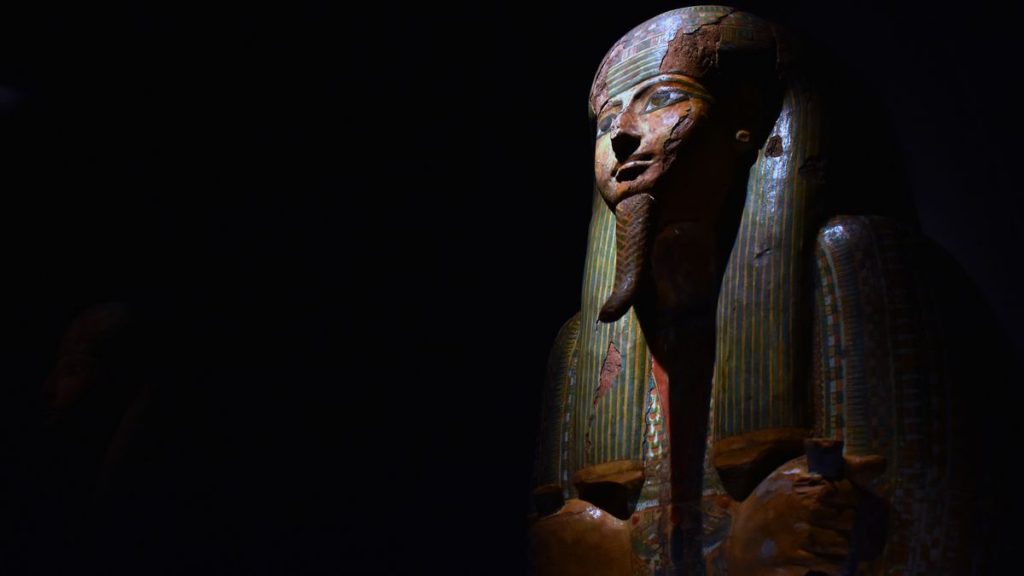
It is a uncommon archaeological discover. The Egyptian Ministry of Tourism and Antiquities introduced the current discovery of 13 Egyptian coffins in a burial shaft within the historic necropolis of Saqqara.
A uncommon archaeological discover calling others
The 2,500-year-old picket coffins unearthed by archaeologists had been so properly preserved that the intricate designs adorning them, painted in blue, gold, white, black and pink, had been nonetheless clearly seen. These had been found inside a burial shaft situated 11 meters beneath the bottom, within the necropolis of Saqqara, the place the inhabitants of the Lower Egypt buried their lifeless for over 3,000 years. More astonishing nonetheless, these had been stacked and completely sealed, a particularly uncommon truth on this place notably liable to looting.
” Witnessing a brand new archaeological discovery offers an indescribable feeling », Declared particularly Khaled Al-Anani, Minister of Tourism and Antiquities, specifying that this was a very powerful archaeological discovery since that of 30 sarcophagi within the cemetery ofEl-Assasif, in October 2019. While it’s at present troublesome to know the precise id of the deceased, the funeral furnishings used means that they belonged to a excessive social class. According to the Egyptian authorities, the excavation website incorporates different graves, which must be unearthed quickly.
Coffins check with a interval of main political upheaval in Egypt
The not too long ago found stacked coffins, in addition to these unearthed at El-Assasif, characterize solely a tiny proportion of the human and animal stays discovered Saqqara, gigantic necropolis and sophisticated of pyramids within the area of Memphis, first capital ofAncient Egypt. Located roughly 30 kilometers south of Cairo, Saqqara was additionally the final residence of the kings who reigned throughout the First and Second Dynasties, in addition to Djoser, first ruler of the Third Dynasty, who had the well-known step pyramid constructed there to accommodate his stays.
Around 500 BC, akin to the time throughout which the occupants of the not too long ago found coffins lived, theEgypt went by a interval of main political upheaval. With particularly the conquest and the incorporation ofEgypt to thePersian Empire in 525 BCE by Cambyses II. During this era, often called the twenty seventh Dynasty, the Persians exercised their energy by a resident governor, known as satrap.
The Persian King’s Takeover Darius I (521-486 BC) meant a interval of prosperity for theEgypt, characterised by the development of temples and quite a few infrastructures, in addition to a strengthening of the economic system and an overhaul of the authorized system. It would in the end be mandatory to attend till 404 BC, in order that the Egyptians retake the throne, thus placing an finish to Persian rule.

